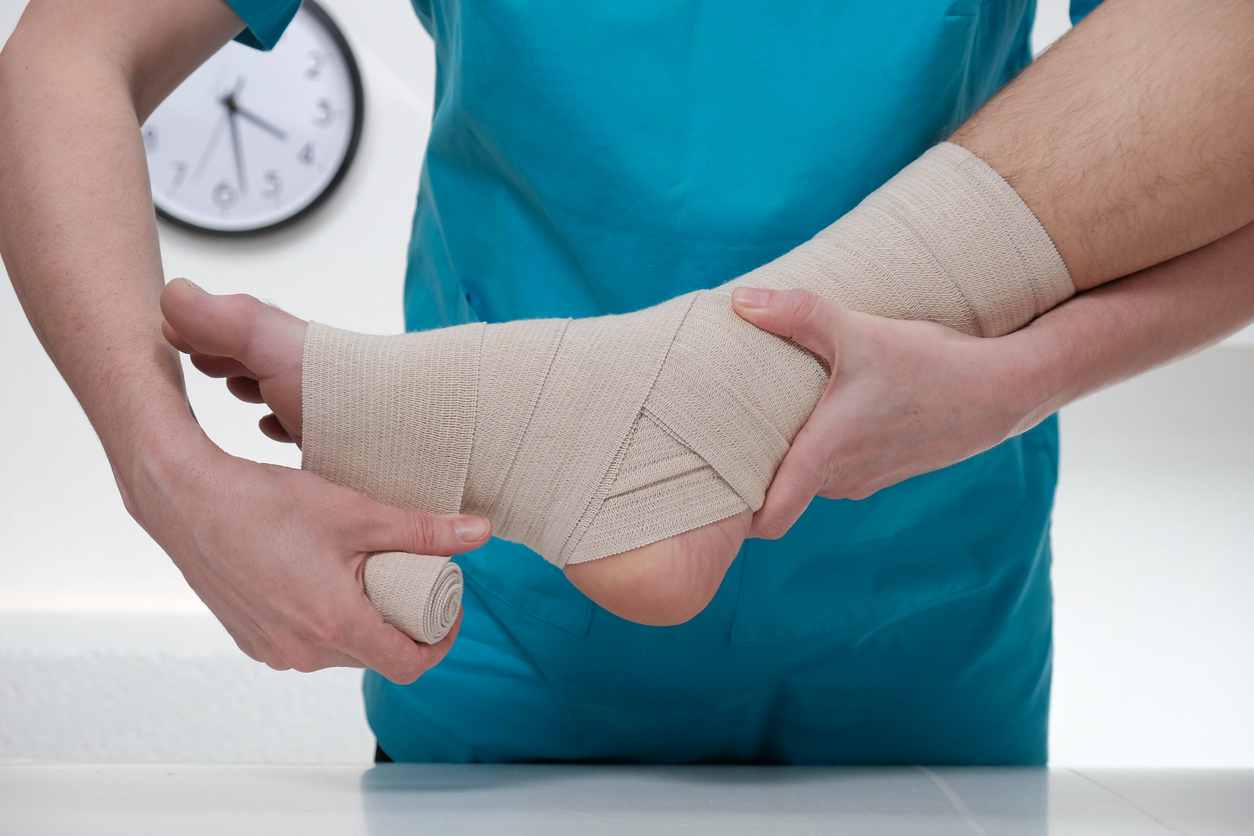
For many professional athletes, the risk of developing an injury during training and in-game activity is high, especially in sports that require contact. Many different kinds of injuries can occur, with some being more frequent for certain sports than for others.Consider these four injuries athletes are likely to endure during physical activity, as well as how to approach injuries effectively while working under the supervision of a physiotherapist.
1. Ankle Sprains Occur Easily and Often During Prolonged Activity
Ankle sprains are a pretty common injury among athletes. This lower leg injury occurs frequently under physical activity, particularly during running sports such as basketball, soccer, and football. An ankle can get sprained when someone slips, gets stomped on, or a lot of pressure is placed on the ligament in an awkward position. There are different levels of severity, ranging from grades 1 to 3, which depend on the speed and force used in the incident.
Wrapping an ankle sprain helps prevent swelling
A grade 1 sprain is the least severe and only requires light stretching. A grade 2 sprain involves partial tearing of the ligament while grade 3 indicates the most severe type of damage. In the latter, the ligament is completely torn and there is a high degree of instability when rotating the ankle joint.
2. A Hamstring Strain / Pull Is Another Common Leg Injury
An injury to the hamstring is another ailment that occurs during active running in sports and can be quite incapacitating. The hamstring consists of three muscles that are located behind the knee and quadriceps. The strain or pull occurs with an overuse of the muscle and can take a long time to heal.
Warming up the muscle is an effective way to improve elasticity
With an injured hamstring, some may experience pain and bruising and an inability to perform any leg movement activities. Students in a physiotherapy assisting program may know that physiotherapists recommend warming up and massaging the area before any physical exertion in order to limit any unforeseen muscle strain or pull.
3. Shoulder Injuries Are Often Seen by Professionals from Physiotherapy Assisting College
These injuries likely occur during excess contact or rotational sports such as hockey, football, rugby, tennis, or boxing. Constant contact or movements such as throwing a football or throwing punches places an abnormal amount of pressure on the rotator cuff and area of the shoulder. It is this pressure that can sometimes lead to shoulder injuries.
Dislocation is fairly common as a result of contact, either with another player or a collision with the ground, and occurs when the bone pops out of the socket. If this happens, athletes will be in a lot of pain and the injury will be clearly visible.
Graduates of a physiotherapy assisting college may know that physiotherapists advise individuals to participate in exercises that strengthen the shoulder area as weak rotator cuff muscles are more prone to shoulder separation. In a minor incidence of a dislocated shoulder, the upper arm bone will pop back in on its own, but medical attention is required in more severe cases.
4. Lower Back Strains Are More Common Than Most People Think
An injury not many people consider when it comes to sports is lower back, or musculoligamentous, strains. This type of injury can range from pre-existing problems, trauma inflicted in the area, or other factors that limit athletes and active individuals significantly. The injury affects an individual’s soft tissue in the spine, nerves, tendons, and blood vessels.
Advanced treatments may be needed if the sudden movement causing the injury is severe and could sideline an athlete indefinitely or for a prolonged period of time.
Are you interested in getting the training you need for a rewarding career?
Contact Medix College for more information on acquiring a rehabilitation physiotherapy assistant diploma .

